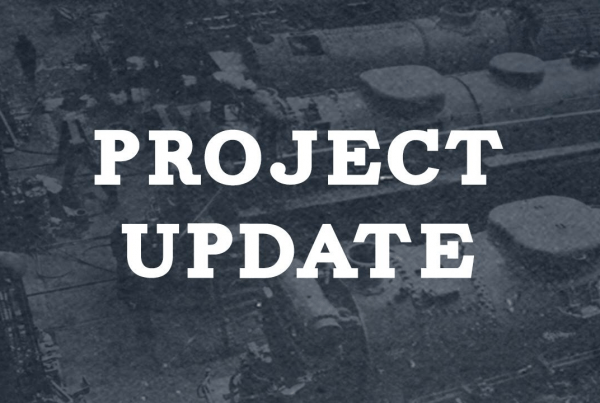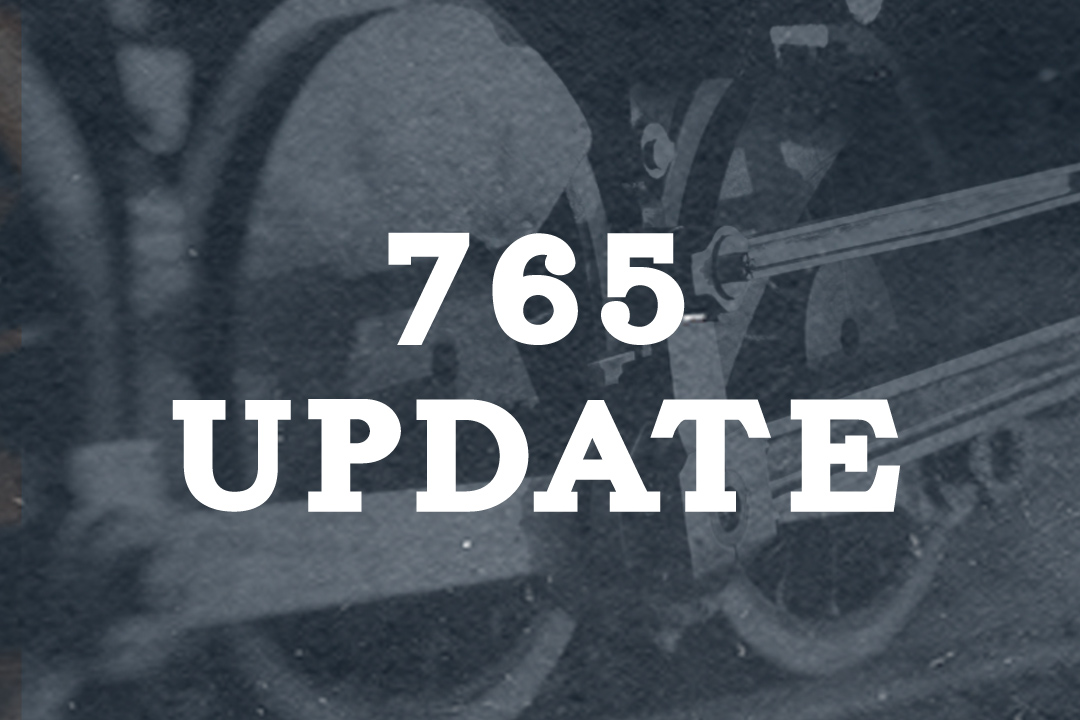Submitted by Steve Winicker.
LAST WEEKENDS SHOP ACTIVITY
The majority of effort was spent on the power car this past week. The 765’s gauges were deadweight tested and adjusted as needed by Jim Arris. Saturday Chuck Young installed them back into the cab of the locomotive. We test fit the shoulder stud Dave Green is making and found it to be coming along. It should be ready to install along with the firebox door in a couple of weeks. Jim Donahue cleaned the old paint off the driver tires and some other parts to get them ready for a new coat of paint.
The power car is coming along with the ladders back in place and the cut levers also operational. Dave is adding under floor structures to support the new generators, Matt Lee straightened the dent in the side of the car. Jerrad, Jeff and others worked on putting in the floor on the east end. Jerrad also built duct work for the generator air intakes. Drew worked on smoothing the welds on those ducts and began work on the cars hand brake. Other projects and folks also added to the work that needs to be completed.
UPCOMING ACTIVITIES
We still need to hook up the electric connections between the engine and tender. We also need to inventory supplies and get the hydrostatic test tools out of storage and hooked up for the hydrostatic test coming up in April.
SAFETY SENSE
Chemicals are a major part of our everyday life at home, work and play. Examples include toxins, corrosives, solvents and numerous other substances. As long as we take proper precautions, these substances can be handled safely.
Chemicals that you use at home include gasoline, paints, fertilizers, lawn chemicals, bug spray, paint strippers, kerosene, bleach and other household cleaners.
However, chemicals you may use at work frequently are facility-specific solvents, laboratory chemicals, fuels, paint, office copier chemicals, correction fluid, lubricants and corrosives.
Inhalation….Breathing in dusts, mists and vapors – Example…working with bags of refractory material without a respirator.
- Ingestion….Eating contaminated food – Example…Having lunch in the work area where there are airborne contaminants.
- Absorption….Skin contact with a chemical – Example…handling feedwater chemicals without rubber gloves and a face shield.
- Injection Forcing an agent into the body a high-pressure device – Example…misuse of a high-pressure washer.
You can protect yourself against chemical hazards by….
- Reading container labels, material safety data sheets (MSDSs) and safe-work instructions before you handle a chemical.
- Using specified personal protective equipment (PPE) that may include chemical-splash goggles, a respirator, safety gloves, apron, steel-toed shoes, safety glasses with side shields, etc. Ensure the PPE fits properly and you are trained in its use.
- Inspecting all PPE before you use them. Look for defects in the equipment such as cracks, missing parts, rips, etc. Ensure your respirator has the proper chemical cartridge for the particular chemical hazard. Change cartridges when it is necessary.
- Wear proper fitting dust masks when working in areas with high suspended dust concentrations such as when blowing the flues.
- Knowing the location of eyewash stations and how to use them.
- Washing your hands before eating, especially after handling chemicals.
Chemicals are a necessary component in our everyday lives and in the Society operations and maintenance activities. Proper handling and use precautions and procedures are an absolute must in order to prevent injury to oneself and others.


